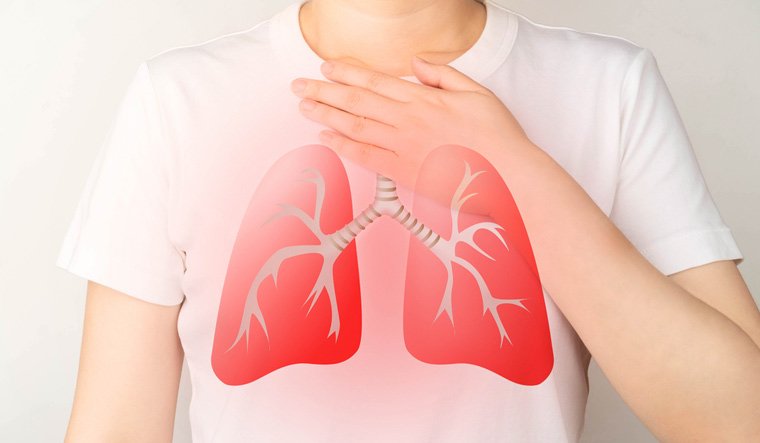Antibiotics have played a crucial role in the reduction in the incidence of TB globally as evidenced by the fact that before the mid-20th century, the mortality rate within five years of the onset of the disease was 50%. The use of antibiotics has eliminated TB as a devastating disease, but the challenge of resistance to anti-TB drugs, which had already been described at the time of the introduction of streptomycin, has become a major global issue in disease management. Mismanagement of multidrug-resistant tuberculosis (MDR-TB) cases, resulting from intermittent drug use, prescription errors, and non-compliance of patients, has been identified as a critical risk factor for the development of extensively drug-resistant tuberculosis (XDR-TB). Antimicrobial resistance (AMR) in TB is a multi-factorial, complex problem of microbes evolving to escape antibiotics, the gradual decline in antibiotic development, and different economic and social conditions. In this review, we summarize recent advances in our understanding of how Mycobacterium tuberculosis evolves drug resistance.
Modern diagnosis methodologies and treatment techniques have led to tuberculosis (TB) becoming a preventable and curable disease in today’s world. However, early detection and prompt commencement of treatment hold the key to timely and complete recovery. According to WHO, over 10 million people contract TB every year across the globe. Lack of awareness about modern diagnosis techniques as well as treatment processes, inadequate funding, and delays in research and trials have been assessed to be posing major hurdles in TB prevention globally.
TB was the world’s second leading cause of death from a single infectious agent in 2022, after the COVID-19 virus. It caused almost twice as many deaths as HIV/ AIDS. While the global number of people newly diagnosed with TB was 7.5 million in 2022, an estimated 1.3 million deaths that year were attributed to the disease.
The International Leadership Summit of Medical Associations on ‘Achieving UNHLM Targets to End Tuberculosis’, jointly hosted by the Indian Medical Association (IMA) and Commonwealth Medical Association (CMA) in Kochi, Kerala on Saturday discussed a number of relevant updates on TB prevention, challenges faced, and the role of private healthcare providers in tackling the disease.
While assessing the challenges, the panel discussed antimicrobial resistance and the growing threat of drug-resistant TB, along with subclinical, i.e. asymptomatic TB, as areas of serious concern. According to Dr Suvanand Sahu, Deputy Executive Director of the Stop TB Partnership Secretariat in Geneva, among the estimated 4 lakh people who develop common forms of drug-resistant TB, only around 1.7 lakh are getting proper treatment. “More than half of those infected are not even receiving any treatment. Since TB is an airborne disease, this is a very risky scenario, and poses a grave problem,” he said.
With the development of rapid molecular tests and new tools, the diagnosis of TB has improved by leaps and bounds. Modern treatment processes have also successfully reduced the treatment time for the disease from 18 months to 6 months. “In most cases, patients fail to complete the course of treatment. Six months of regular and continuous treatment is required for a complete cure. Stopping treatment in between when the symptoms are alleviated, or when you feel slightly better, will do more harm than good,” said Dr Gopikumar P., an ENT specialist.
Despite medical science having developed molecular tests and other such modern tools, most countries are still relying on sputum microscopy, which is more than 100 years old, and a sub-optimal diagnosis method.
“While this needs to be improved, we also need to locally focus on proper and systematic screening for TB, as well as preventive treatment for contacts to check the spread of the disease, both of which are presently not taking place effectively in India. From a global perspective also, one of the major challenges that remain in TB prevention is lack of adequate funding,” said Dr Sahu.
He also highlighted the lack of funding for TB research as another factor that was reining in efforts by medical researchers to develop vaccines for the disease. “Currently, adult vaccination trials are in progress. Phase-III trials are now going on, when they should have taken place long back. In the case of COVID-19, the process moved fast due to adequate and timely funding, as well as advance commitment. Likewise, if funding is made available, things will pick up pace for TB research, too,” Sahu added.
Preventing the spread of TB infection
Since TB is an airborne infectious disease, early diagnosis and initiation of treatment, as well as screening of contacts of the patients are key factors in preventing its spread.
“While TB is many a time referred to as a poor man’s disease, actually that is not the case. It spreads easily amongst those living in close proximity. There are different kinds of TB that affect other parts of the body too, such as kidneys and lymph nodes. However, TB that affects the lungs is the only transmissible kind,” said Dr Ommen George, a public health specialist based in Delhi.
Identifying and screening the vulnerable—particularly the elderly, as well as those with reduced immunity or malnutrition, and those with diseases like cancer, and HIV—and providing timely and effective treatment once the disease is detected, is a sustainable way of tackling the spread of this disease. Also, since proper nutrition plays a very vital role in preventing the infection and its spread, efforts by governmental agencies, NGOs and individuals in rooting out hunger and malnutrition from society need to be actively encouraged so that this dangerous ailment can be eradicated.
We also highlight the importance of developing shorter regimens that rapidly reach bacteria in diverse host environments, eradicating all mycobacterial populations and preventing the evolution of drug resistance. Lastly, we also emphasize that the current burden of this ancient disease is driven by a combination of complex interactions between mycobacterial and host factors, and that only a holistic approach that effectively addresses all the critical issues associated with drug resistance will limit the further spread of drug-resistant strains throughout the community.
